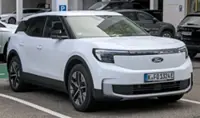Mercedes-Benz is developing a coating capable of capturing the sun's heat to extract energy and recharge the batteries of its electric cars. — Mercedes-Benz
Mercedes-Benz is currently working on a new technology that will enable an electric vehicle to increase its range by charging its battery while driving, thanks to a solar coating covering almost the entire vehicle. According to their initial tests, this solution could generate enough electricity to cover more than 12,000 km per year.
The solar paint coating is just five micrometers thick – less than a human hair – and weighs just 50 grams per square meter. Theoretically, it could be applied transparently to the bodywork of electric vehicles, given that this active photovoltaic surface is highly malleable and can be applied to any surface.





